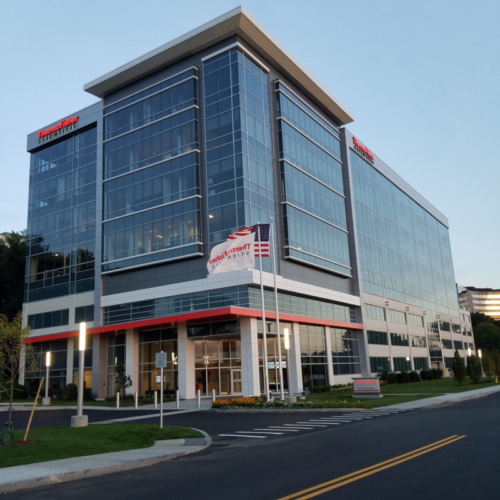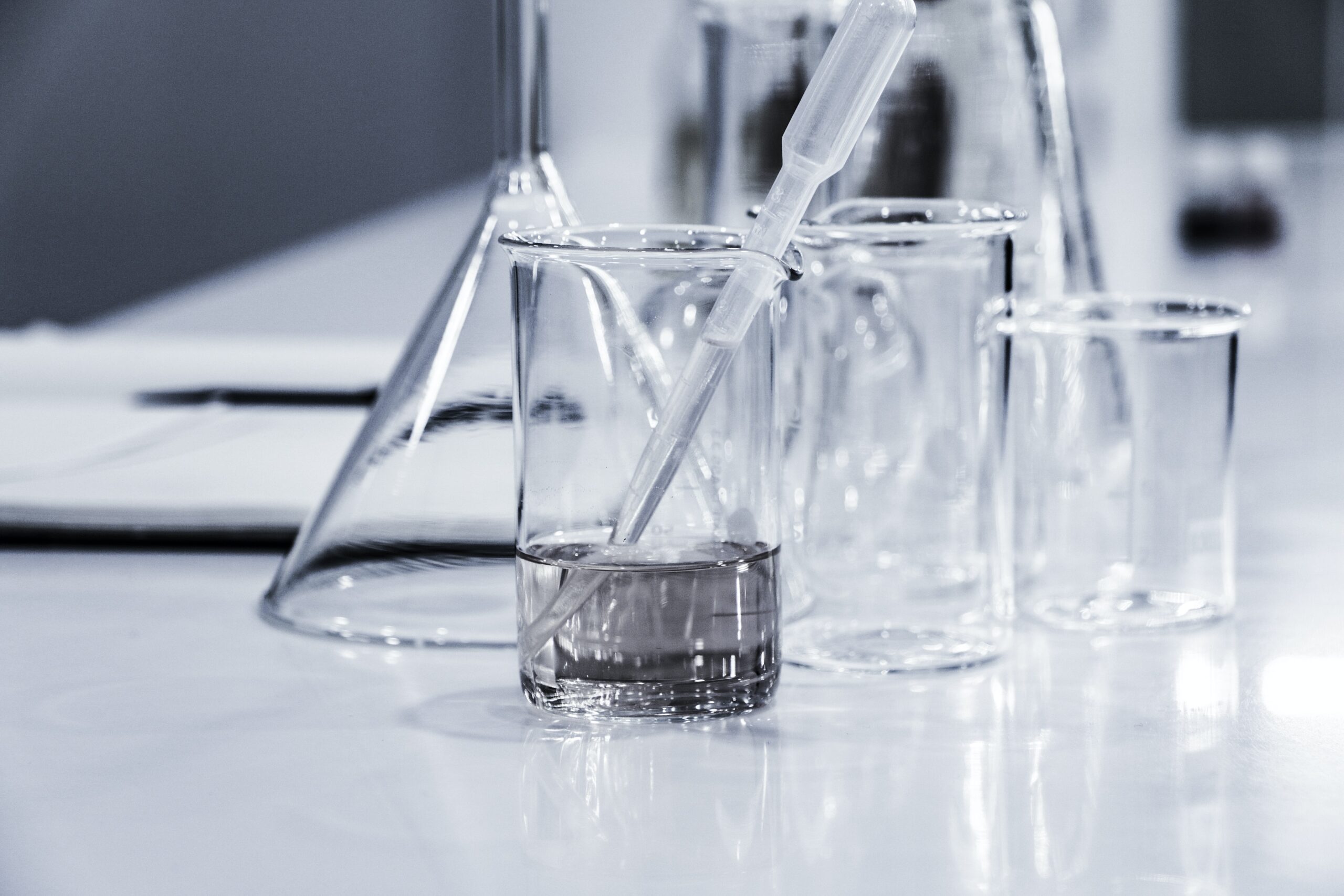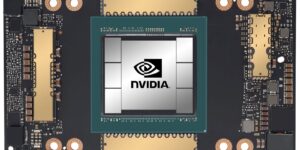Diagnostics is the Place to Be in Healthcare, and TMO Is King of the Hill
Thermo Fisher Scientific (NYSE: TMO) is a multinational corporation which develops and markets a large range of equipment and software used by the science and engineering communities for their core responsibilities. Its headquarters is in the Boston suburb of Waltham, Massachusetts.
Some examples of the products the company engineers, develops, and markets include laboratory glassware, scanning electron microscopes, thermometers, research chemicals, scientific software, scientific instrumentation, bioprocessing systems, supplies for medical testing, automatic pipette systems, laboratory ovens, laboratory refrigerators, and the list continues.
In fact, TMO has over 200 brands. The majority of these brands are not well known outside of science, medicine, and engineering circles with perhaps one exception – Nalgene bottles, which have found recent popularity outside of the laboratory.

Thermo Fisher Scientific headquarters in Waltham, Massachusetts, USA. (Source: middlesexglass.net)
As vast as TMO’s product offerings are, it stands to reason it serves a vast number of different sectors. Its products find applications in industrial, academic, healthcare, crime and government labs. Some of the technical fields that use the company’s offerings include materials science, biology, medicine, chemical, and forensics, just to name few. In fact, probably in any laboratory in any country around the world, you’ll find products from TMO.

Popular Nalgene sports water bottle. (Source: analogcycles.com)
It Started Small But Grew
Thermo Fisher Scientific was created by the merger of Thermo Electron and Fisher Scientific in 2006. Prior to 2006, Fisher Scientific likely had the most diverse laboratory equipment catalog on the planet for “serving science.” (corporate slogan.)
The Fisher Scientific catalog sold everything you could image would be necessary to run any kind of laboratory, whether it be medical, metallurgical, chemical, etc. Back in the days before having their catalog online, every lab seemed to have a copy of the Fisher Scientific catalog. It must have weighed several kilos, been 10 cm thick, and had thousands of pages.
Just like today, the catalog offered everything from common laboratory chemicals, laboratory gloves, laboratory jackets, beakers, test tubes, laboratory ovens, ring stands, Bunsen burners – all those things you image when someone says “mad scientist’s laboratory.”

A massive Fisher Scientific catalog, pre-internet. (Source: ebay.com)
Fisher Scientific dates to 1902 with a young engineering student at University of Pittsburg named Chester Garfield Fisher. Upon graduating, C.G. Fisher bought out the stock room at the Pittsburgh Testing Laboratory and began selling those items.
The first paper catalog came out in 1904 and consisted of 400 pages. In the 1920s, the company developed, on its own, various types of burners and ovens for laboratory use. In the mid-1960s, the company also developed, again on its own, a differential thermal analyzer.
Throughout the rest of the 1900s, the company acquired multiple smaller companies with related products. In 1965, it was taken public, then subsequently bought privately and sold multiple times. The final change came in 2006 when Thermo Electron and Fisher Scientific merged to form Thermo Fisher Scientific. The merger was worth nearly $13 billion.
Thermo Electron was similarly as impressive as Fisher Scientific because of the vast number of complicated laboratory analytical equipment they engineered, developed, manufactured and marketed.
Whereas Fisher Scientific sold less complicated, lower-tech items, Thermo Electron sold very complicated devices involving robotics, computers, micro-heaters, etc. In most cases, recognition of these devices by name requires a medical or technical background, but some examples to ponder include: X-Ray diffractometers, chemical absorption testers, Fourier Transform Infrared spectrometers, radiation measurement devices, centrifuges, liquid and gas chromatography apparatus, viscometers, refrigeration baths, necropsy equipment, and on and on.
These systems are used extensively in the fields of organic chemistry, pharmaceuticals, materials science, biology, and nuclear science, just to name a few. Services to run and maintain these systems were also for sale by Thermo Electron prior to the merger.
The Beginning of Thermo Electron & the Start of Something Big
In 1956, George Hatsopoulos and Peter Nomikos co-founded Thermo Electron. Hatsopoulos had a Ph.D. in Mechanical Engineering and is also known today for his contributions to the field of thermodynamics. During his time as a graduate student at the Massachusetts Institute of Technology where he earned his Ph.D., his dissertation work was sponsored by the Matrad Corporation, which was owned by the Nomikos Family. So, it was a natural transition when Peter Nomikos, who had just finished an MBA at Harvard University, became co-founder of Thermo Electron, which was working to commercialize some of the work done by Hatsopoulos during his Ph.D. work in converting heat into electricity.
In 1991, Thermo Electron commercialized the Zetatron, which was developed at Sandia National Lab as a neutron source for doing various types of neutron spectroscopy.

Co-founder of Thermo Electron, George Hatsopoulos, holding his invention that turned heat into electricity, which was one of the company’s first products (source: bizjournals.com)
Given the relative strengths of both Fisher Scientific and Thermo Electron, the two companies complement each other nicely and made for a natural merger. As mentioned previously, Fisher was big on the catalog sales side of lab equipment with less complexity, and Thermo was well established in the high-end analytical instrument space.
Since merging in 2006, the combined company has grown rapidly through hundreds of acquisitions. Some especially strong companies purchased include Alfa Aesar, which sells chemicals and materials used in research and development and for various pieces of analytical equipment, Veeco (TMO purchased a stake, but not the entire company), which makes equipment for processing thin film electric materials used in high-tech electronic devices, and Noran Instruments, which develops, manufactures, and sells analytical equipment.
A Pivot in Corporate Strategy to Vaccine Development and Production Support
Most recently, Thermo Fisher Scientific has focused large efforts on supporting mitigation efforts of the COVID 19 pandemic. From available public information, it looks very much like a good part of the company’s corporate strategy, as well as its mergers and acquisition strategy, has been tailored to support these mitigation efforts. As a shining example of this, in February 2022, TMO announced a 15-year cooperation to work with famed mRNA COVID-19 vaccine developer, Moderna, to support a new, large-scale production facility for its SPIKEVAX vaccine. In the same announcement, the company also revealed that the two companies have been cooperating for the past few years on the development of mRNA vaccines.

Moderna Facility in New Hampshire that produces mRNA vaccines. The effort is also supported through a cooperation with Thermo Fisher Scientific. (Source: cen.asc.org/business)
In August 2020, Thermo Fisher Scientific announced that it had opened its new Lenexa Facility for the sole purpose of manufacturing supplies used in COVID 19 tests. A few months later, the company purchased Belgian company Henogan SA, which manufactures something called viral vectors, which are used in vaccines for COVID-19. Finally, PPD. Inc. became the next purchase for TMO in December 2021. This company is a comprehensive, integrated, independent drug development lab started by Fred Eschelman in 1985 in Maryland.
The net result today is that TMO pretty much dominates global laboratory equipment development and sales. Clearly, they are prepared to tackle vaccine development for subsequent virus pandemics and new waves of COVID-19 variants for many years to come. This focus on the long term is an indication of a company that plans its strategy along important MegaTrends.
TMO Update

As you can see from this 10-year stock chart, TMO stock continues its upward march, with only slight dips along the way. This kind of historical view reinforces our thinking that this is a great time to buy into TMO.
TMO stock is down about 15% year-to-date, but it’s still 21% in the past 12 months. Its PE is now at a reasonable level given the inherent growth the company promises, and there is very little short interest betting against the stock here. That’s a good sign that the stock is close to a bottom and is ideal for some bargain shopping.


